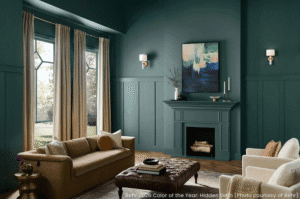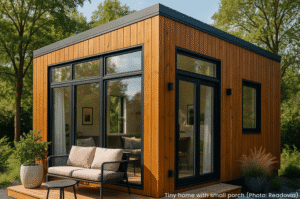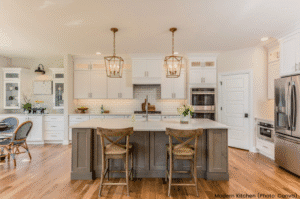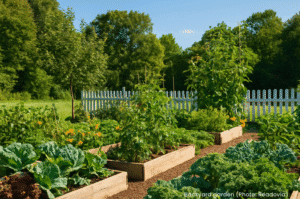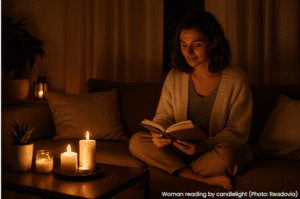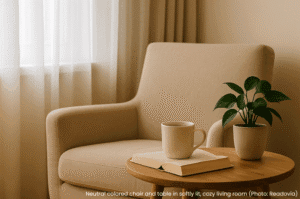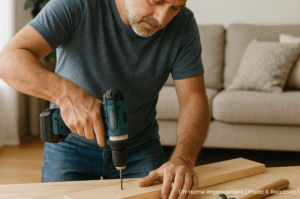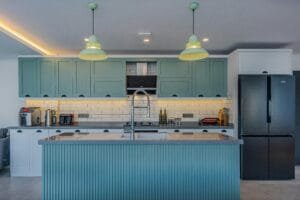As we head into 2025, the world of home improvement is evolving. With shifting design trends, new technologies, and growing environmental awareness, homeowners are investing in spaces that combine functionality, comfort, and sustainability. If you’re planning any updates or renovations this year, here are the biggest trends to consider—and what’s starting to fade.
1. What’s Fading: The All-White Everything Trend
For a long time, white walls, white kitchens, and minimalist designs ruled the home improvement scene. But in 2025, this trend is losing its appeal as homeowners seek warmth, texture, and more vibrant, expressive design.
Excessive Minimalism: Rooms that feel sterile and overly simplistic are being replaced by spaces that encourage comfort, individuality, and personality.
Impersonal Decor: Mass-produced, generic furniture is being swapped out for pieces that reflect personal style, whether vintage, eclectic, or custom-designed.
2. Smart Homes Aren’t Just for Tech Enthusiasts
Technology has continued to transform how we live in our homes. In 2025, smart home technology is becoming more accessible and functional, extending beyond simple security systems.
Voice-Controlled Devices: Smart speakers and virtual assistants like Alexa and Google Assistant are now controlling everything from lighting to thermostats and even kitchen appliances.
Home Automation: Homeowners are embracing automation with systems that learn their habits and adjust temperature, lighting, and security settings without manual input.
Smart Kitchens: AI-powered appliances that can suggest recipes, order groceries, and even cook food are becoming standard in many homes.
3. Maximizing Small Spaces with Multi-Functional Furniture
As real estate prices rise and space becomes more limited, homeowners are looking for ways to maximize the space they have. Multi-functional furniture is a solution that’s here to stay.
Foldable and Expandable Furniture: Pieces like foldable dining tables, expandable couches, and beds that transform into desks help make the most of small living spaces.
Hidden Storage Solutions: Under-bed storage, built-in shelves, and even furniture that doubles as storage are gaining popularity for their ability to keep homes organized and clutter-free.
4. Bold Colors and Customization in Interior Design
While neutral tones dominated for years, 2025 is seeing a return of bold colors, personalized touches, and unique design choices in home interiors.
Vibrant Hues: Expect to see shades like deep blues, rich greens, and bold oranges making their way into living rooms, kitchens, and bedrooms.
Custom Decor: Homeowners are opting for custom furniture, hand-made art, and personalized details to make their homes truly one-of-a-kind.
5. Outdoor Living Spaces as Extensions of the Home
As the lines between indoor and outdoor living continue to blur, outdoor spaces are becoming more like fully functional rooms of the house.
Outdoor Kitchens: Full outdoor kitchens with grills, sinks, and refrigerators are becoming more common for those who love entertaining or dining al fresco.
Fire Pits and Lounges: Comfortable seating areas and fire pits are essential for cozy evenings in the backyard.
Zen Gardens and Relaxation Areas: More homeowners are designing outdoor spaces dedicated to relaxation, incorporating elements like water features, greenery, and quiet spots for reflection.
6. Sustainable Living Is More Than a Trend
Eco-friendly renovations are no longer a “nice to have” but a “must have.” Homeowners are increasingly seeking to reduce their carbon footprint with sustainable upgrades that save energy and water while boosting home value.
Energy-Efficient Appliances: From smart refrigerators to dishwashers that use less water and energy, the demand for energy-efficient appliances continues to rise.
Solar Panels: Solar energy is becoming a standard choice for homeowners looking to cut energy costs and reduce reliance on fossil fuels.
Water Conservation: Low-flow toilets, rainwater harvesting systems, and drought-resistant landscaping are all becoming more popular.
Wrapping Up
Whether you’re looking to reduce your environmental impact, embrace cutting-edge tech, or create a space that reflects your personal style, 2025 is the year of transformation for home improvement. By focusing on sustainability, smart technology, and customizable design, you can create a space that’s not only functional but also a true reflection of who you are.













